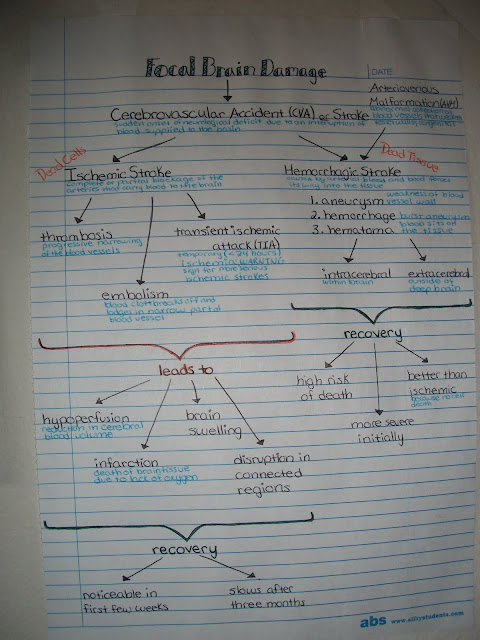The stroke was classified as a "light" stroke. Technically termed a Transient Ischemic Attack (TIA), it "is an episode in which a person has stroke-like symptoms for less than 24 hours, usually less than one to two hours" according to the National Institute of Health. Since my grandma experienced a Transient Ischemic Attack, and TIA is an Ischemic stroke, it means that she may have experienced brain swelling, reduction of cerebral blood volume, and death of brain tissue due to lack of oxygen. Ischemic strokes occur when blood supply to part of the brain is suddenly interrupted. Fortunately for us, TIA is the lightest of the Ischemic strokes, and ischemia is temporary.
Here is a chart I made for my neurology class explaining the breakdown of a stroke |
Here are a few facts about strokes:
•Ischemic - blockage of a blood vessel supplying the brain
•Hemorrhagic- bleeding into or around the brain
•Third leading cause of death in the United States (heart disease and cancer #1 and 2)
•Costs $30 billion annually in health care
•A stroke strikes every minute in America
•Stroke is number one cause of adult disability
•about 700,000 strokes per year (500,000 new and 200,000 repeat)
•about 88% of strokes are ischemic and 12% are hemorrhagic
•Cell death in Ischemic strokes make recovery slower and harder than Hemorrhagic strokes
Notes from Dr. Insop Kim's Neurology class (CSD 310)



No comments:
Post a Comment